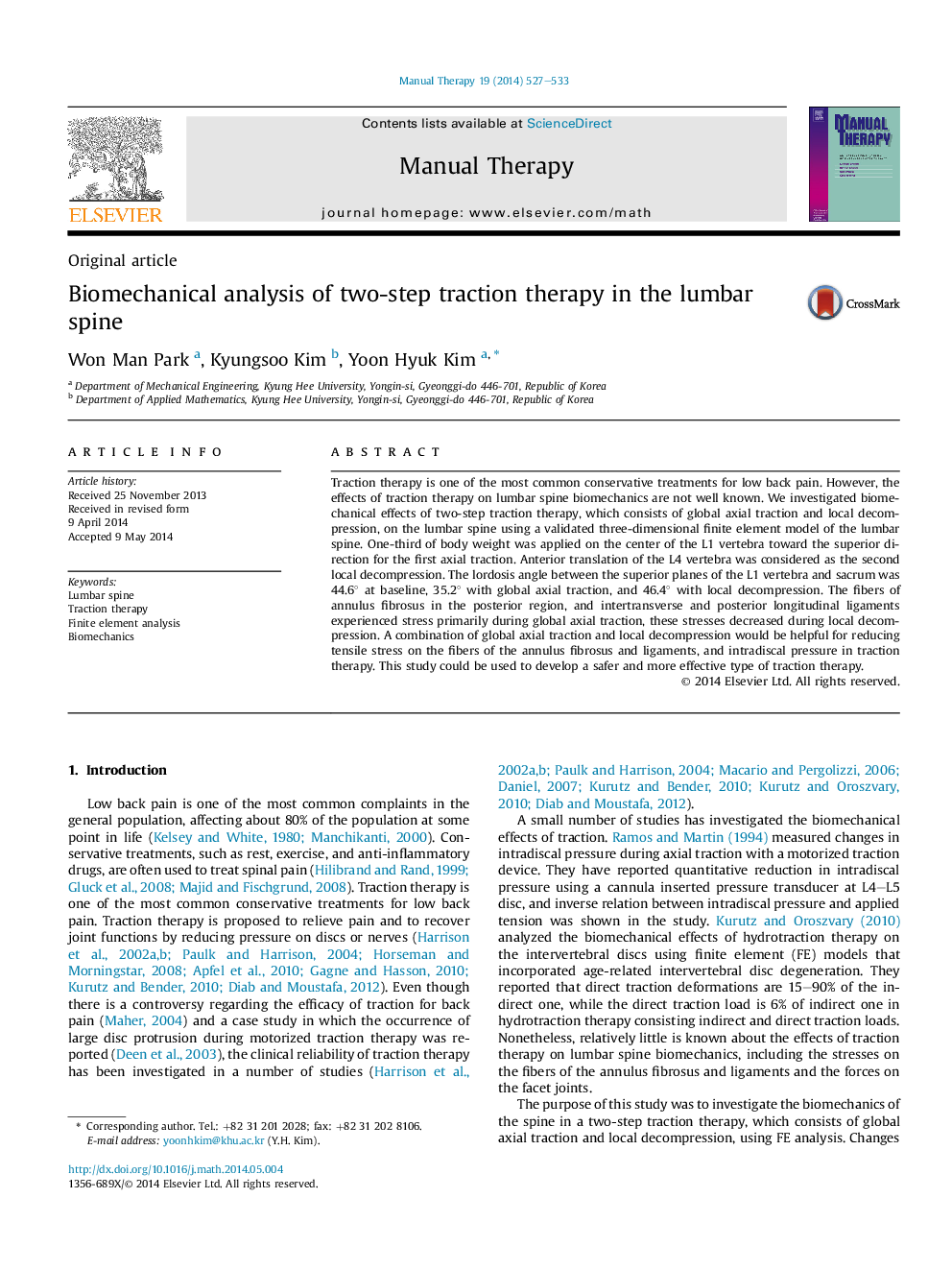| Article ID | Journal | Published Year | Pages | File Type |
|---|---|---|---|---|
| 5864657 | Manual Therapy | 2014 | 7 Pages |
Traction therapy is one of the most common conservative treatments for low back pain. However, the effects of traction therapy on lumbar spine biomechanics are not well known. We investigated biomechanical effects of two-step traction therapy, which consists of global axial traction and local decompression, on the lumbar spine using a validated three-dimensional finite element model of the lumbar spine. One-third of body weight was applied on the center of the L1 vertebra toward the superior direction for the first axial traction. Anterior translation of the L4 vertebra was considered as the second local decompression. The lordosis angle between the superior planes of the L1 vertebra and sacrum was 44.6° at baseline, 35.2° with global axial traction, and 46.4° with local decompression. The fibers of annulus fibrosus in the posterior region, and intertransverse and posterior longitudinal ligaments experienced stress primarily during global axial traction, these stresses decreased during local decompression. A combination of global axial traction and local decompression would be helpful for reducing tensile stress on the fibers of the annulus fibrosus and ligaments, and intradiscal pressure in traction therapy. This study could be used to develop a safer and more effective type of traction therapy.
